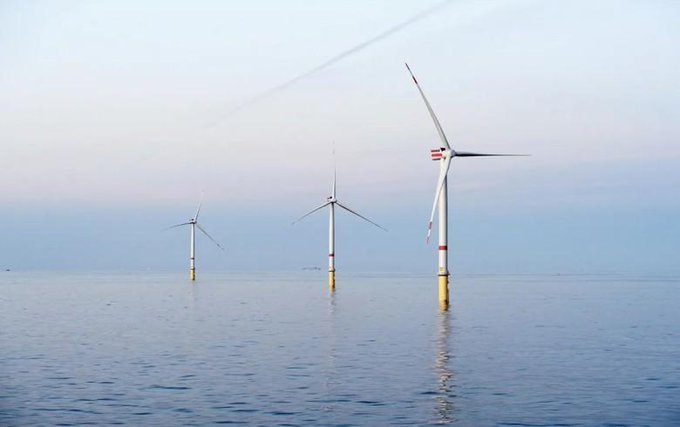The 1.1 GW Seagreen offshore wind farm, ranked among the top ten largest offshore wind farms in the world, is also Scotland’s largest, and the world’s deepest fixed-bottom offshore wind farm. It features 114 Vestas V164 10 MW installed on-site. Cumulatively, they generate 1,075 MW of renewable energy.
The wind turbines were delivered by Cadeler’s wind farm installation vessel, Wind Orca. This was from Vestas’ turbine marshalling station at Able Seaton Port in Hartlepool. Wind Orca, which succeeded Wind Osprey on the project, was supported during installation by the service operation vessel Acta Centaurus and crew transfer vessels HST Harri and HST Euan.
In early December 2022, the first wind turbine was installed at the site. It is located around 27 kilometers off the coast of Angus. This milestone also marked the first time a wind turbine with a capacity of more than ten megawatts was installed offshore in Europe.
Project Factsheet
Developer: SSE Renewables
Partner: TotalEnergies
Capacity: 1,075 MW
Cost: GBP 3 Billion
Turbines: 114 Vestas V164-10 MW units
Foundations: Steel jacket mounted on suction-bucket caissons
Water Depths: Up to 58.6 meters
Site Area: Part of the Firth of Forth Zone (Round 3 offshore wind zone awarded in 2010)
Development Rights: Awarded in 2010 to SSE Renewables via Crown Estate
Project Permit: Granted in 2014
Major Construction Start: October 2021
First Turbine Installation: December 2021
First Power: August 2022
Status: Operational
Full Operational Status: Achieved in October 2023
Seagreen Offshore Wind Farm Construction
Turbine installation procedure occurred concurrently with Seaway 7’s foundation installation campaign out of Scotland’s Port of Nigg.
By late 2022, 62 wind turbine jacket foundations had been built at the site. In December, a jacket foundation intended for the project’s deepest position was erected 59 meters below sea level.
The GBP 3 billion project was scheduled for completion in the first half of 2023. It is jointly owned by SSE Renewables and TotalEnergies. SSE Renewables (49%) also oversaw the development and construction of the Seagreen offshore wind farm project on behalf of TotalEnergies (51%).
In late August 2023, Seagreen offshore wind farm supplied its first power to the Scotland’s electricity grid. It is capable of generating around 5,000 GWh of renewable energy per year. This is enough to power more than 1.6 million households.

